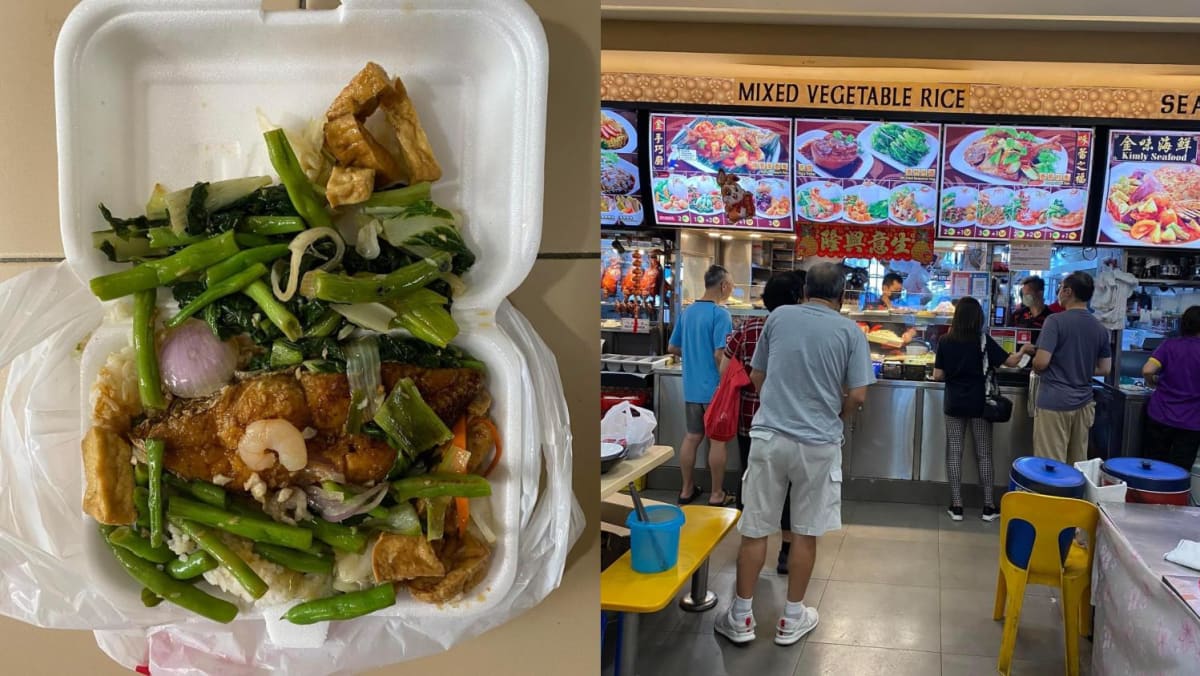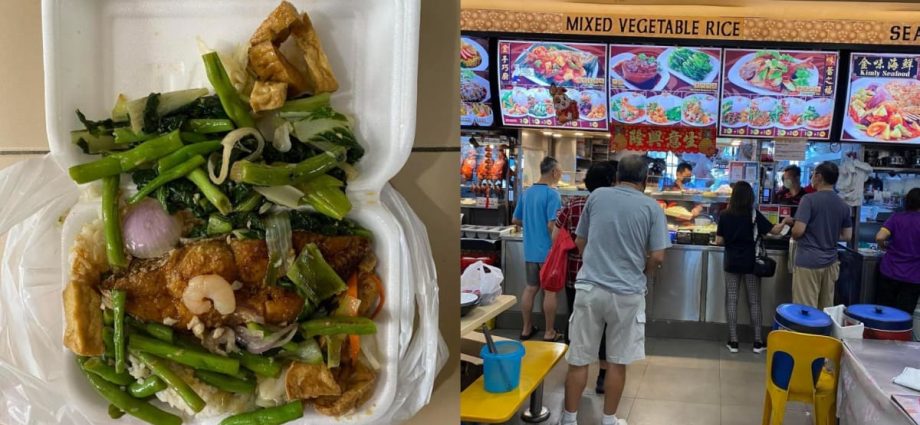
INCONSISTENT PRICING
Speaking to CNA, Mr Huang, who declined to reveal any other personal details, said he felt many were “missing some important points” in his post.
“It is about the inconsistencies I’d put up with for an extended period and that the cost of my orders depended on which assistant was serving me. It was not about including a fish in my cai fan,” he said.
He added that there are four hawker assistants at that stall, two who “charge exorbitantly” and two who charge “more reasonably”.
He used to visit this stall in Pasir Ris at least twice a week, but said he hasn’t returned since the incident. He found it “too ludicrous”, even though he is “usually nonchalant” about inconsistent pricing.
“It was only a few days prior when I’d ordered a similar packet of cai fan plus a second one with three dishes, and the total came up to (about) S$11. I couldn’t fathom how just days later that that lone packet of food would have cost me more than S$10,” he explained.
While the cost of his meal was high, “it was more a case of being jaded by their wildly inconsistent pricing”, he added.
Others who spoke to CNA, however, were more accepting of fluctuating prices.
Founder of the Makansutra food guide, KF Seetoh, said inconsistent prices could be due to supply cost for the day, and that “nothing stays the same price”.
“Sometimes, you dole out a bigger portion, you charge a bit more. Inconsistency lies in portioning, not pricing,” he added, suggesting that “actual proof” is needed before accepting the legitimacy of complaints.
A regular customer of her neighbourhood’s economy rice stall, who only wanted to be known as Mdm Jan, noted that the amount charged at such stalls is “based on trust”.
“If it’s late at night, they might want to clear the dishes. So the same dish could be cheaper at night,” the 64-year-old added.
“And you also don’t know how the hawker calculates. Tofu with a few minced meat pieces could be calculated as a meat dish, and would be priced as more expensive (than if it was considered a vegetable dish). If it’s a more expensive fish, you expect it to be pricier.”

